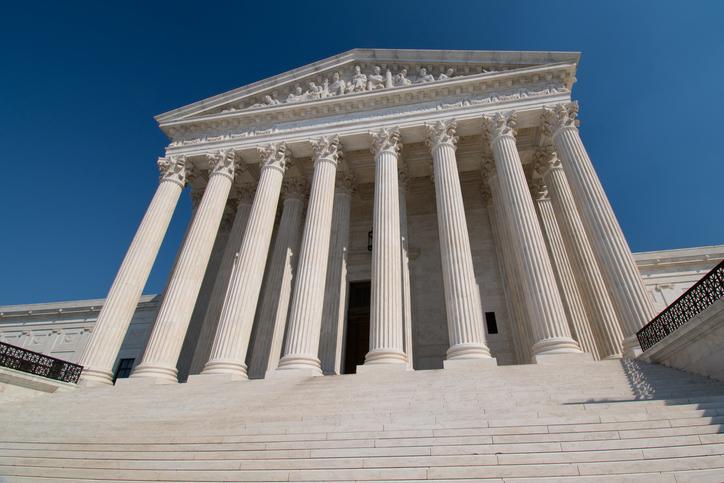
Inflation in the US is at forty-year highs, while interest rates on ten-year Treasury notes just hit 3 percent—signaling trouble for home buyers. Truck drivers pay more than $1,000 to fill their rigs with $5 per gallon diesel to deliver your increasingly expensive groceries and Amazon packages. Crime and homelessness skyrocket in large cities, exacerbated by virulent opioids like fentanyl and krokodil. And America’s proxy war with Russia in Ukraine gives rise to the most serious threats of nuclear strikes against the West since the 1960s.
Yet so-called social issues, from abortion to critical race theory to teaching gender identity in elementary schools, dominate our politics and media. Virtually every voter has a strong opinion on these issues, and pays far more attention to them than, say, the M2 money supply or the next Fed Open Market Committee meeting—though the latter could have a far greater impact on that voter’s life and finances.
Why is this so?
The short answer is the Supreme Court.
Yesterday brought news that a leaked draft opinion allegedly from Supreme Court Justice Alito portends the overturning of Roe v. Wade. This brought forth paroxysms of anger and fear from across the media spectrum, especially on social platforms like Twitter. Protestors quickly arrived at the newly fenced-off court building, and the commentariat began issuing predictable dire threats for the future of women posed by a Trumpian right-wing court.
Again, we don’t see these outbursts when Congress spends $5 trillion on stimulus or the Fed quadruples its balance sheet, to put it mildly. Or even when gas prices double.
Acting wildly beyond its constitutional parameters, the court has become the de facto superlegislature for all fifty states. The political class pretends otherwise, but the stridency of its denunciations against “conservative” court nominees and its slavish support for progressive nominees demonstrates the irretrievably political nature of granting a handful of Justices such power over the lives of 330 million people. In such a top-down, winner-take-all environment, the stakes become needlessly high and politicized in nastiest ways imaginable. So of course presidential elections, and the resulting makeup of the court, become matters of life and death for the true believers whose sense of identity is rooted in the social issues ruled upon by the court.
This happened for two primary reasons.
First, so-called judicial review created a superpower to determine the constitutionality of any law at any level of government, a superpower nowhere to be found in Article 3 of the Constitution. This effectively grants the court potential jurisdiction over every last state or local law, down to the most minute edicts which ought to be none of the federal government’s business. This is an absurd result and a gross abuse of the Constitution’s shared powers under a federalist system. Even if one argues the court generally does not abuse this power to boss around states, it always could and sometimes does.
Second, specious interpretations of the Fourteenth Amendment and the resulting Incorporation Doctrine effectively threw a net of federal laws, rules, and court decisions over all fifty states without their consent. Nobody at the time the amendment passed, especially various ratifying state legislators, could have imagined the opaque language of the amendment would cause the high court to issue a series of rulings turning states into glorified federal counties.
Rather than “incorporate” certain provisions of a federal constitution into state law, why not do so expressly? For example, why not simply rewrite the First Amendment to say: “Neither Congress, the various states, nor any subdivision of the various states shall make any law respecting…”
We all know why—this kind of express language would have been a complete political nonstarter at the time. Even the northern states still wanted and demanded far more independence from the federal government during the Reconstruction era.
Thus we are left with a permanent injury to federalism and the Tenth Amendment, an injury which causes social issues to play a vastly outsized role in American politics. This is not to say the Supreme Court had less impact on economic matters, given, e.g., its perverse interpretations of the Commerce Clause and absurd rulings during the Lochner era. But people don’t flood the steps of the Supreme Court to protest minimum wage laws or scream obscenities at Justices over cases of zoning in the city of New London, Connecticut.
In short, there is nothing remotely suggesting a right to abortion in the text of the Constitution under even the most tortured interpretation. Thus it is purely a matter for states under the Ninth and Tenth Amendments. Overturning Roe does not change a single abortion law in a single state. And it does not prevent any state legislature from loosening abortion restrictions in reaction. It simply removes jurisdiction over the issue from federal courts. This ought to be a “solution” amenable to everyone.
Mass democracy, under shifting rules often determined by nine politicized judges, is not a prescription for harmony and goodwill among 330 million very diverse Americans. Those millions don’t much agree about guns, God, abortion, and plenty more. But they don’t have to agree. In a “postliberal” and post-good-faith environment, aggressive federalism and realistic discussions of political secession are the obvious path forward. If you claim to love your fellow American citizens, unyoke them from the federal superstate and demand the same for yourself. The universalist, totalizing impulse, which resulted in the dramatic centralization of state power throughout the twentieth century, must be reversed in the twenty-first. The other way lies political strife, and worse.





